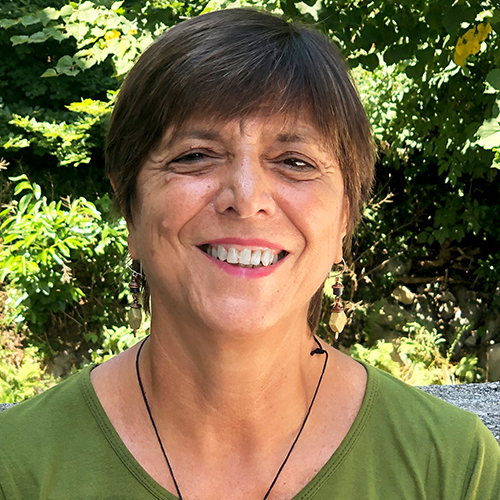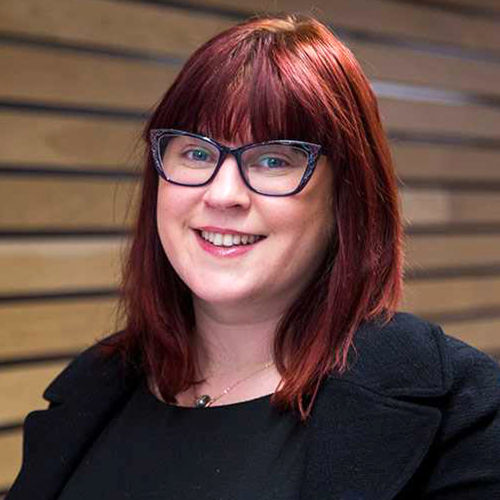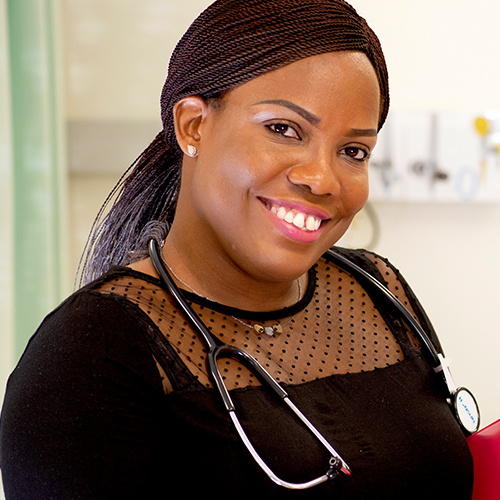GOLD Learning Labour & Delivery Online Symposium 2024
Save the date for the second annual GOLD Learning Labour and Delivery Symposium! This exciting learning opportunity will provide the latest evidence-based continuing education for health care professionals working with birthing families. Research tells us that healthcare professionals have an important role to play in helping to create a safe and positive birth experience that helps set parents and their infants up for lifelong health and well-being. Join us starting on October 7th 2024 to expand your knowledge and learn more about the latest research on vitamin K, sterile water injections for back pain in labour, childbearing and Hypermobile Ehlers-Danlos Syndrome, fundal assessments, pre-eclampsia management during labour, pelvic biomechanics and so much more! We look forward to seeing you online!
This symposium has applied for CERPs, CME Credits, Nurse Contact Hours, Midwifery Contact Hours, ACM CPD hours and also qualifies for ACNM CE Credits.
Want to Sign Up as a Group of 5 or more? Contact us at [email protected]


Nigel is a Registered Midwife and Senior Research Fellow at the School of Nursing, Midwifery and Social Work, The University of Queensland. His interest in research is underpinned by many years of clinical practice.
The main focus of his research has been on optimising care during childbirth. In particular, he has undertaken mixed methods research and published extensively in the use of sterile water injections for pain relief in labour. He has also led research projects into first and second stage management, and induction of labour. Nigel has strong collaborative research networks with researchers across Australia and in the UK, Sweden, Canada and the United States.
Topic: Sterile Water Injections for Managing Back Pain in Labour: Evidence, Techniques and Implementation - [View Abstract]
1: Identify risk factors for and describe the physiology of back pain in labour.
2: List the research surrounding the use of sterile water injections.
3: Describe the procedure and techniques for using sterile water injections in labour.
4: Design strategies for implementation.
Up to 30% of women experience severe back pain in labour. In qualitative studies women have described how labour back pain limited their mobility and altered their plans for analgesia use. Injections of small amounts of sterile water into the skin of the lower back are used to alleviate back pain for up to two hours. Whilst much research supports the effectiveness of the technique, critics suggest a placebo effect or dismiss the procedure as ‘midwifery voodoo’. This presentation will examine the causes and physiology of back pain in labour, examine and critique the research into sterile water injections, and describe the various techniques, benefits and limitations for use in clinical practice. Finally, I will discuss strategies for and dealing with barriers to implementation.


Kelly is a nurse educator, community midwife, and Spinning Babies®️ Approved Trainer. Passionate about translating physiologic birth principles for the hospital setting, she offers restorative retreats, mentorship, and shift debriefs for nurses.
1. Explain the principles of polyvagal theory to understand their own autonomic state.
2. Analyze the relationship between their professional challenges and those of their patients.
3. List three strategies to apply systems thinking to challenging aspects of their work.
The language of resiliency, wellness, and burnout is commonplace today, as the healthcare system looks to address the state of the nursing profession since the Covid-19 pandemic. But what are the solutions that actually work? How do we find our way to not just survive, but to feel inspired by the future of our role as nurses? We can find answers in the practical applications of polyvagal theory, systems thinking, and returning to the heart of perinatal nursing. We also learn that birth outcomes improve along the way.


Loredana is an Independent midwife and freelance midwifery teacher
She completed a BsC in Midwifery and a Masters Degree at King's College and City University of London and I am a certified acupuncturist specialized in obstetric acupuncture.
She is teaching nationally and internationally, workshops for midwives on the use of acupressure for pregnancy and birth. Since introducing the workshop in Italy and in England "Acupressure for pregnancy and birth" many hospitals are introducing acupressure for labour preparation, induction of labour and for pain relief.
She is using acupressure whithin her clinical practice facilitating home birth and supporting women for labour preparation and induction of labour.
Loredana has just published a book called Acupressure and Moxibustion for Childbirth on Amazon.
Topic: Acupressure For Pregnancy and Birth - [View Abstract]
1. Explain the theory behind acupressure for pain relief in labour.
2. Describe the technique involved in acupressure and on which point it should be performed.
3. Define how midwives and nurses can teach these techniques to women and their birthing partner or support person to promote partner involvement.
Acupressure is an ancient Chinese technique based on the principle of acupuncture, which involves the use of finger pressure (without a needle) on acupuncture points situated on the meridians. Applying pressure to these acupressure points will increase the production of oxytocin, also known as the love hormone, and endorphins. This is important during labour as it aids relaxation and reduces the perception of pain. Acupressure is a non-invasive technique. It is an accessible, effective and safe birthing tool for midwives and support people and promotes partner involvement. As it is drug free, it does not have harmful teratogenic effects, thus providing a much safer and satisfying childbirth experience. In addition to this, it is proven that touch during labour enhances the childbirth experience in as much as it reduces pain. By facilitating physiological births it also reduces the need for epidurals and C sections.
Promoting these skills and using acupressure techniques during labour enables professionals to offer women a wider range of choice in how to manage pain relief. Therefore, the use of acupressure offers a positive and non-traumatic birthing experience, provides a more general sense of wellbeing, empowers women and strengthens relationships with the midwife and the support people.


Rebecca Dekker, a nurse with her PhD, is the founder and CEO of Evidence Based Birth® and the author of "Babies Are Not Pizzas: They're Born, Not Delivered!" Previously, Dr. Dekker was an Assistant Professor of Nursing at the University of Kentucky.
In 2016, she left academia to focus full time on the mission of Evidence Based Birth.® Dr. Dekker and the Team at EBB are directly creating positive change for health care workers and parents -- by making the research evidence on childbirth publicly accessible, their Evidence Based Birth® podcast just surpassed 6 million downloads! Dr. Dekker and Team EBB are committed to creating a world in which all families have access to safe, respectful, evidence based, and empowering care during pregnancy, birth, and postpartum.
Topic: Vitamin K for Newborns: Unraveling Social Media Myths from Research-Based Facts - [View Abstract]
1. Explain the history of giving Vitamin K to newborns.
2. Explain 3 examples of facts from myths perpetuated via social media influencers.
3. Describe the most recent research evidence on Vitamin K.
Vitamin K deficiency bleeding in newborns, a problem of the past, has been thrust into the spotlight due to myths spread on social media. In this session with Dr. Rebecca Dekker of Evidence Based Birth, we will unravel common reasons for refusing the Vitamin K shot, including fears of the “Black Box Warning” and beliefs that the injection is synthetic, toxic, unsafe, or unnatural. You’ll walk away with an in-depth understanding of the newest research on Vitamin K, including evidence on oral drops vs. the shot, and the benefits and risks of each. Don’t miss this chance to strengthen your knowledge of Vitamin K for newborns so that you can have more informed conversations with your coworkers and clients!


Mandy Rempfer-Kuncio is passionate about the pelvis! She believes the pelvis serves as the foundation for many fabulous things like pregnancy, birth and babies (including 3 of her own). Mandy has been a pelvic + reproductive physiotherapist for over 15 years, and she is also certified birth doula. Her overarching belief is that strong + healthy mothers/parents go on to build strong + healthy families, which in turn build strong + healthy communities and a better world.
Professionally, you can find Mandy supporting mothers, women and the 2SLGBTQIA+ community at her clinic, Nurturance Health. In her practice, she addresses concerns such as incontinence, pelvic organ prolapse, diastases recti, birth injuries, and pelvic pain.
You can connect further with Mandy (and her blog) at https://nurturancehealth.ca/, and you can also connect with Mandy on Facebook (https://www.facebook.com/nurtureher1/) and Instagram: https://www.instagram.com/nurturance.health/.
1. 1. Define the most prominent bony landmarks of the pelvis.
2. Describe the current research findings surrounding maternal positions for labour and birth. br
3. Identify ways to help birthers to choose and use different positions in labour depending n the stage of labour.
Modern medicine seems to have made so many advances in so many areas… yet far too many birthers still experience birth-related injuries or are left with unwanted symptoms after birth, like incontinence and pelvic organ prolapse. Good news: biomechanics may not be the be-all-end-all, but their consideration definitely has benefits. In this presentation, you’ll have the opportunity to really get to know the pelvis, and learn how to help birthers choose and use different positions at different times throughout labour. As an added bonus, you’ll also learn how to promote pelvic floor wellness in a birthing person.


In 2021 Dr Pezaro won the 'Partnership Working' award from the Royal college of midwives and a 'Midwives Award' from the Iolanthe Midwifery Trust. In 2019, Dr Pezaro was honoured with a first prize award from the Royal Society of Medicine in 'Leading and inspiring excellence in maternity care' and was also first runner-up for the British Journal of Midwifery's 'Midwife of the Year' 2019. - @SallyPezaro
Topic: New Educational Tools to Support Childbearing With Hypermobility Spectrum Disorders - [View Abstract]
1. Define hypermobile Ehlers Danlos Syndrome (hEDS) and Hypermobility Spectrum Disorders (HSD) and their prevalence.
2. Explain 2 ways hEDS/HSD may affect those childbearing and their infants.
3. Identify 3 key research findings pertaining to childbearing with hEDS/HSD.
4. Describe how childbearing with hEDS/HSD may be managed in line with newly co-created evidence based guidelines.
It is thought that hypermobile Ehlers Danlos Syndrome (hEDS) and Hypermobility Spectrum Disorders (HSD) are not rare, and yet they are rarely diagnosed. As these conditions affect connective tissue throughout the body they can have a profound impact upon those childbearing, where the human body goes through a multitude of changes in response to pregnancy and birth. They can also impact on the newborn. In order to provide guidance where currently there is none, an international group of patients and academic and clinical experts came together to co-create evidence-based international guidelines for the management of these conditions in pregnancy, birth and beyond. Guidelines include the antenatal, intrapartum, and postnatal periods, and touch on a range of evidence in this field. The lived experiences of those childbearing with hEDS/HSD also demonstrate how clinicians can make a real difference to outcomes and experiences, yet clinicians often express a need for more knowledge and education in this area. It is hoped that these guidelines will be used by clinicians and birthing people to facilitate evidence-based decision making in this area for improved outcomes and experiences overall.


Barbara (she/they) is an expert in Trauma Informed Perinatal Advocacy, Care, & Education (c). They are a former labor and delivery nurse and public health home visiting nurse serving in perinatal/maternal child health and child abuse prevention programs. They currently work as a public health nurse manager in Oregon and provides private consultation and education on a limited basis to multidisciplinary perinatal professionals and advocates.
Barbara specializes in community based and systems level work on topics including but not limited to: public health; perinatal, infant, child, and family health; perinatal, infant, and child mental health; trauma informed/responsive care; crisis response and recovery; perinatal substance use; domestic/family/intimate partner violence; child neglect/abuse prevention; and obstetric violence.
Barbara is also a parent of four and loves to spend as much time playing and gardening as possible.
1. Define trauma informed care.
2. Define 3 elements of fundal assessment through an evidence-based, trauma-informed lens.
3. Describe an evidence based, trauma informed approach to fundal assessments.
Fundal, or uterine, assessment is routinely performed by nurses, midwives, and medical providers as a standard of care in the immediate recovery period after birth and postpartum. There is a long history of community based birth attendants providing fundal assessment for early identification, prevention, and intervention of complications that involve or impact the uterus. This continues in current U.S. and global medical, midwifery, and nursing standards of care. Fundal assessment, or “checks” have also been increasingly described as severely painful, traumatic, and/or as a form of obstetric violence by clients. An evidence based, trauma informed approach to fundal checks protects and promotes safety for both the client and the provider of care. In this session we will examine and enhance existing understanding of fundal assessment, trauma informed care to reduce the potential for client harm/trauma and/or provider secondary trauma.


Nikki is originally from South Dakota in the United States. Prior to working in birth, she traveled through Europe and spent a decade living and working in France. She then returned to the US to become a nurse and found her passion of working with families at all points in their perinatal journeys. She currently lives in Seattle and works as a Labor & Birth nurse.
Nikki has been a Spinning Babies® Approved Trainer since 2019, teaching Spinning Babies workshops throughout North America and Europe. She loves all sides of learning and enjoys participating in the development of birth professionals at all levels. She is especially interested in finding ways to support physiological birth and bonding in complex medical situations with evidence-based practice.
1: List 3 benefits of physiology-led care for birthing families 2: Describe how physiology-led care can be integrated into support of birthing families within a medicalized model of care. 3: Describe how to facilitate care planning that balances a physiological approach with complex medical needs for family support in pregnancy and birth.
When pregnancy is medically complex, the focus of care generally becomes the pathology of the complication. But the physiology of labor remains the same. By supporting the normal physiology of labor and birth, even when medical surveillance and intervention are indicated, care providers can support autonomy, reduce trauma, provide for healthy bonding, and improve outcomes.
This presentation will look at specific examples and case planning to highlight the opportunities for building physiological birth care into the medically complex birth scenario.


Dr. Isabella Garti is an early-career midwifery researcher with over 15 years of midwifery practice, education and research experience. Isabella has a keen interest in addressing health service disparities and improving the quality of midwifery care for women who develop pre-eclampsia in poorly resourced settings. Her doctoral study shed light on numerous challenges faced by midwives in managing preeclampsia within low and middle-income countries.
Isabella is passionate about researching evidence-based practice, midwifery-led care, culturally safe maternity care, undergraduate midwifery education, and innovative continuing professional development approaches. Currently she is exploring translating her findings into practice through innovative training programs for midwives.
Topic: Optimizing Clinical Management of Pre-Eclampsia During Labour and Birth - [View Abstract]
1. Describe evidence-based practices for managing preeclampsia during labour and birth.
2. List 2 innovative strategies and approaches to optimise clinical management of preeclampsia, particularly in resource-limited settings.
3. Explain how interdisciplinary collaboration and woman-centred care may enhance outcomes for women and their families affected by preeclampsia during labour and birth.
Preeclampsia remains a significant challenge in maternal healthcare, demanding careful attention and informed approaches during labour and birth. Drawing from a wealth of practical knowledge and research, this presentation navigates the complexities of preeclampsia management, emphasizing the importance of timely, evidence-based interventions, patient-centred care, and collaborative teamwork. By distilling key findings and best practices, this presentation aims to empower healthcare professionals with the knowledge and tools necessary to optimize clinical management and improve outcomes for mothers and infants affected by preeclampsia during labour and birth. It also aims to empower women and their families with information on what to expect and to enhance their advocacy efforts, especially in low- and middle-income countries.


Tanya Singleton is a registered nurse with over 40 years of experience in Maternal-Child nursing as a Labor and Delivery nurse, certified in High-Risk Perinatal nursing, an IBCLC lactation consultant and Lamaze childbirth educator. She retired as United States Army Nurse Corp officer in 2003 and began working in private practice as a lactation consultant and childbirth educator. She has run several community non-profits in the Fredericksburg, Virginia area that dealt with issues related to women's and children's health promotion and illness prevention. She is immediate past Chair of the State of Virginia Breastfeeding Advisory Committee, and is currently Chair of Postpartum Support Virginia Board of Directors.
Tanya is committed to quality education and lifelong learning, and has taught maternal-child and pediatric nursing to students in the Rappahannock Region of Virginia, sharing her various clinical anecdotes in classroom and in labs. She is an advocate for equity in maternal healthcare for women of color and early detection of perinatal mood disorders. She is owner and proprietor of The Baby Whisperer, providing in-home support in childbirth education, breastfeeding and parenting.
She is the mother of a blended family of five adult children and Nana to four.
Topic: Establishing Breastfeeding and Bonding in the Post COVID Hospital Setting - [View Abstract]
Topic: How to be Part of the Solution: The Effects of Intergenerational Trauma on Perinatal Persons of Color - [View Abstract]
1. Describe cultural and historical perspectives of birthing, bonding and breastfeeding.
2. List 3 potential and perceived barriers to bonding and breastfeeding.
3. Describe supportive actions and behaviors as caregivers in the Labor and Delivery room.
4. Explain strategies that support evidence-based practices to enhance bonding and breastfeeding immediately post delivery.
Since the beginning of recorded birth experiences, babies have been placed in their mother's arms immediately after birth. At the turn of the 20th century, hospital births began to become the norm, and "sterile" procedures removed the immediacy of this critical juncture. What does 21st century hospital birth hold in this post-pandemic healthcare environment? ? How do we promote, protect and enhance the birth experience in Labor and Delivery to support bonding and breastfeeding?
Accreditation
ACM CPD Hours for Australian Midwives
This is an Australian College of Midwives CPD Endorsed Activity. This program is approved for 10 ACM CPD Endorsed Hours.
AAFP CME Credits for Physicians & Nurses
The American Academy of Family Physicians has reviewed this activity and deemed it acceptable for AAFP credit. Term of approval is from October 7, 2024 to October 7, 2025. Physicians should claim only the credit commensurate with the extent of their participation in the activity. This activity is approved for 10 AAFP Prescribed CME credits.
MEAC Midwifery CEUs / NARM Contact Hours for Midwives
This program has applied for 10 Contact Hours (1.0 MEAC CEUs) with the Midwifery Education & Accreditation Council (MEAC). *Please note that 0.1 MEAC CEU is equivalent to 1.0 NARM CEU/Contact Hour.
Nurse Contact Hours (ANCC)
This activity has been submitted to American Nurses Association Massachusetts for approval to award 10 contact hours. American Nurses Association Massachusetts is accredited as an approver of nursing continuing professional development by the American Nurses Credentialing Center's Commission (ANCC) on Accreditation. For more information regarding contact hours, please contact Nicole at 1-604-566-8311.
CERPs - Continuing Education Recognition Points
Applicable to International Board Certified Lactation Consultants (IBCLCs), Certified Lactation Counselors (CLCs), Certified Lactation Educators (CLEs), Childbirth Educators (CBEs) and Doulas. GOLD Conferences has been designated as a Long Term Provider of CERPs by IBLCE--Approval #CLT114-07. This program has applied for 10 R-CERPs.
ACNM CE Credits for Nurse-Midwives (Cross Credits)
As per the American College of Nurse-Midwives this activity qualifies for CE Credits. Please access ACNM's CE guidelines for more information. Upon completion of this activity, please download the AAFP CME Certificate for your CE needs.
If you have already participated in this program, you are not eligible to receive additional credits for viewing it again. Please send us an email to [email protected] if you have any questions.
Additional Details
Viewing Time: 8 Weeks
Tags / Categories
(IBCLC) Psychology, Sociology, and Anthropology, Anatomy & Physiology of Pregnancy & Birth, Birth Interventions, Bonding and Attachment, Complementary Care, Evidence-Based Care, Labour & Positioning, Maternal Illness, Preeclampsia & Eclampsia in Midwifery, Theories of Pain & Pain Management, Vitamin K
How much time do I have to view the presentations?
- The viewing time will be specified for each product. When you purchase multiple items in your cart, the viewing time becomes CUMULATIVE. Ex. Lecture 1= 2 weeks and Lecture Pack 2 = 4 Weeks, you will have a total of 6 weeks viewing time for ALL the presentations made in that purchase.
- Time for viewing the talks begins once you purchase the product. For Live Webinars & Symposiums, the viewing period begins from when the live event takes place. Presentations can be accessed 24/7 and can be viewed as many times as you like during the viewing period.
What are bundled lectures?
- Presentations may be available individually or via a bundled package. Bundled lectures are a set of lectures that have been put together based on a specific category or topic. Some lectures will be available in both individual and lecture form, whereas others will be available only via a bundled lecture pack.
Will there be Handouts?
- YES! Each lecture comes with a PDF handout provided by the Speaker.
Some lectures include a Q&A, what does that mean?
- During our online conferences, presentations that occur live are also followed by a short 15 minute Question & Answer Session. The Speaker addresses questions that were posted by Delegates during the presentation. We include the recording of these Q&A Sessions as a bonus for you.
How can I receive a Certificate?
- If this presentation offers a certificate, once you are done viewing the lecture or the lectures within a bundle, submit your attendance record in order to be able to download your certificate. You'll be able to see which credits are offered for the lecture by hovering over the "Credits Available" link within the "Speakers & Topics" tab.
Professionals that selected this package also viewed

|
|

|











